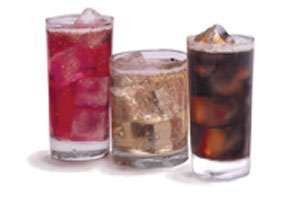 D.D. Williamson conducted an informal taste test with two dozen students. The students, aged 16-18, were presented with carbonated drinks in three different hues (clear, brown and pink) and asked to describe how each tasted. They were not told that all three beverage samples were actually the same flavor (lemon-lime) in three different colors. Demonstrating yet again that color affects taste perception, an overwhelming majority responded, inaccurately, that the beverages had different flavors. Many studies have linked the color of food and beverage products with taste and visual appeal. Contact D.D. Williamson to learn more about naturally derived coloring in carbonated beverages.
D.D. Williamson conducted an informal taste test with two dozen students. The students, aged 16-18, were presented with carbonated drinks in three different hues (clear, brown and pink) and asked to describe how each tasted. They were not told that all three beverage samples were actually the same flavor (lemon-lime) in three different colors. Demonstrating yet again that color affects taste perception, an overwhelming majority responded, inaccurately, that the beverages had different flavors. Many studies have linked the color of food and beverage products with taste and visual appeal. Contact D.D. Williamson to learn more about naturally derived coloring in carbonated beverages.–D.D. Williamson, www.ddwcolor.com
